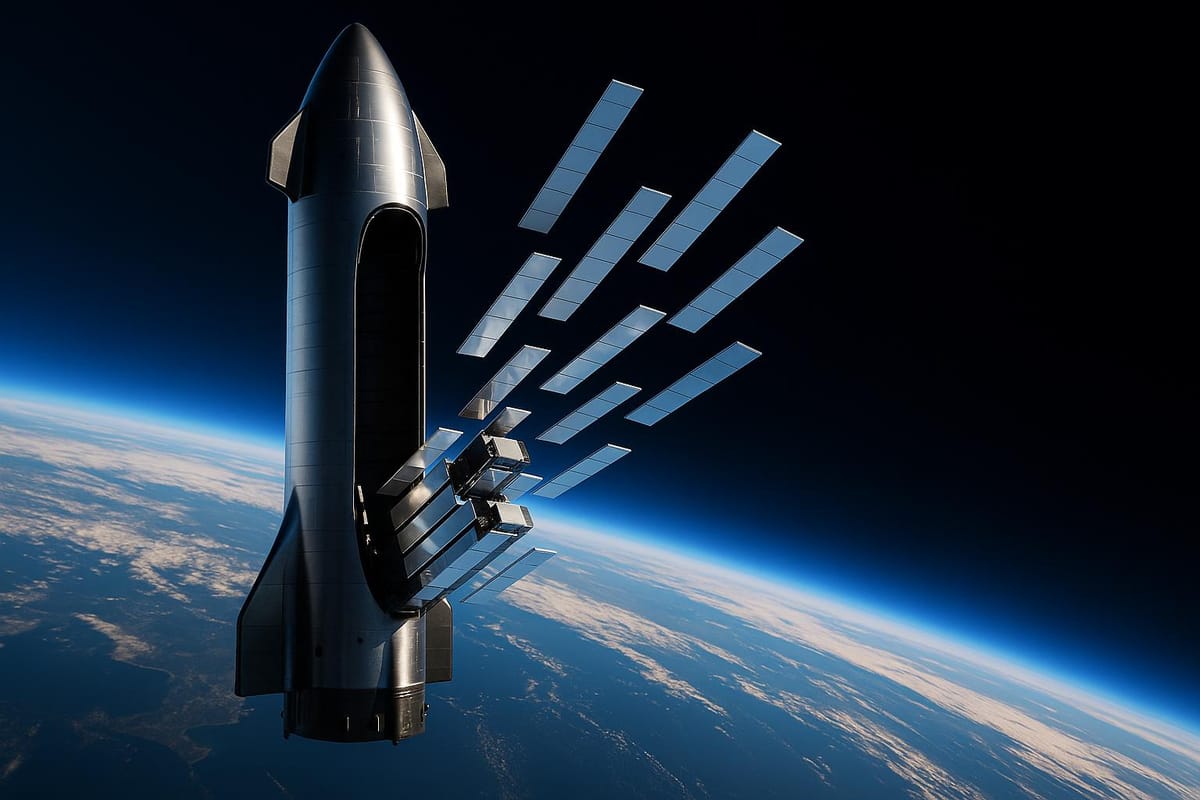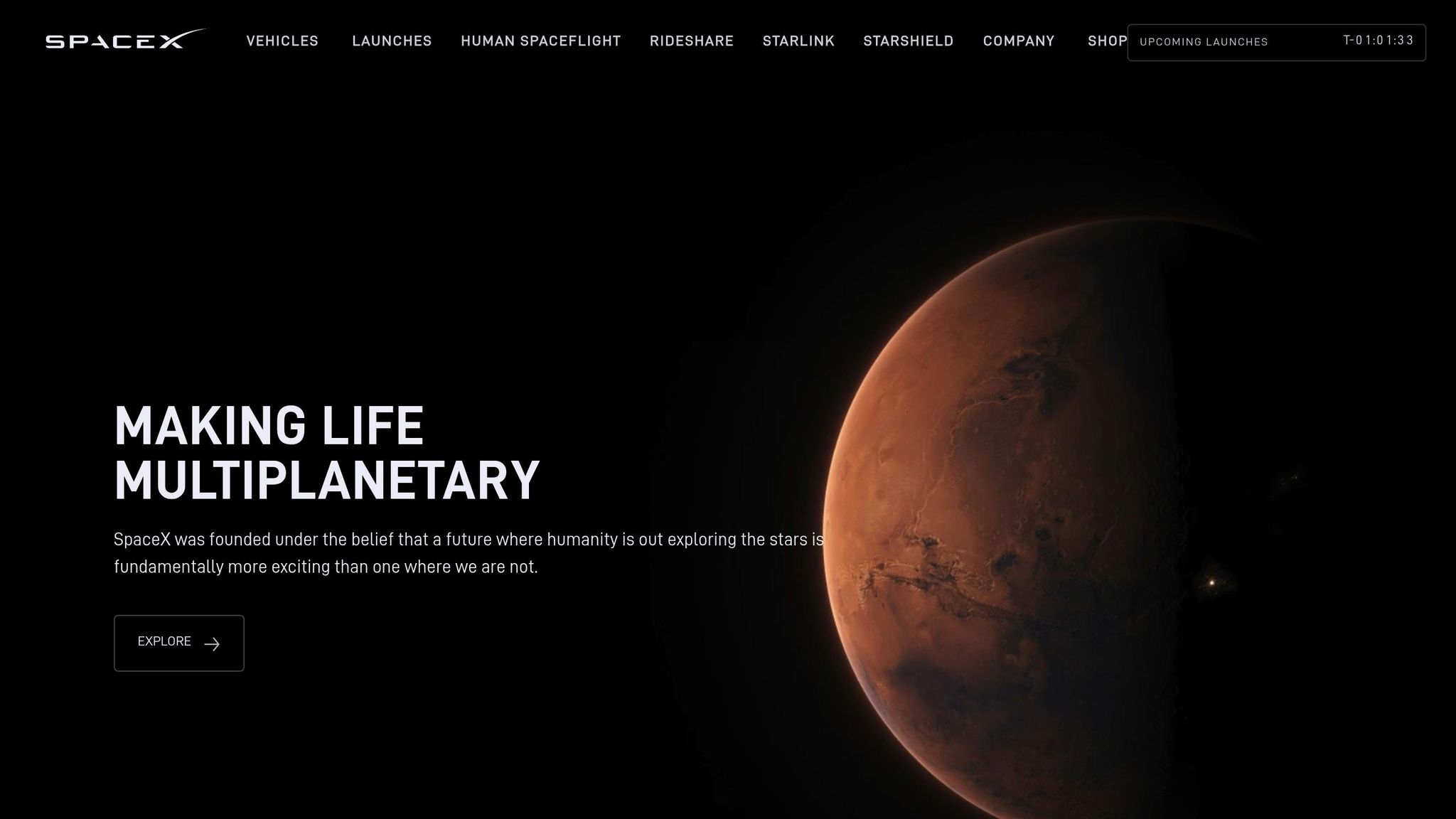How SpaceX Starship Deployments Could Boost Starlink
Discover how SpaceX's Starship test flight success is set to revolutionize Starlink satellite deployment and advance space exploration.

In a milestone moment for space exploration and private aerospace, SpaceX achieved a significant success with its Starship rocket during its 10th test flight. Following two earlier failed attempts earlier this week, this landmark event not only sets a new standard for space missions but also demonstrates SpaceX's commitment to innovation and problem-solving in the face of setbacks. The successful completion of this test marks a turning point for SpaceX’s broader ambitions, which include deploying large-scale Starlink satellite networks and future missions to Mars.
This article delves into the key achievements, challenges overcome, and the broader implications of this test flight for SpaceX, investors, and the future of space technology.
A Mission of Milestones: What Happened During the Test Flight?
The 10th test flight of Starship, SpaceX’s largest and most powerful rocket to date, was a resounding success by all key measures. From liftoff to splashdown, the mission demonstrated critical technological advancements that address prior failures and push the boundaries of aerospace innovation.
1. Successful Liftoff and Stage Separation
The Starship rocket, towering at 123 meters (403 feet), successfully lifted off from SpaceX’s Starbase in Boca Chica, Texas. Its twin-stage structure - comprising the Super Heavy booster and the Starship upper section - performed flawlessly during stage separation. This is a critical milestone, as prior attempts saw issues like loss of control and catastrophic explosions during or shortly after liftoff.
2. Deployment of Dummy Satellites
Perhaps the most striking achievement was the successful deployment of eight dummy satellites. A major test for the Starship’s payload mechanism, this accomplishment validated the reliability of the Pez-dispenser-style payload bay door. The door had previously jammed during earlier tests, but improvements ensured smooth satellite releases this time, paving the way for future Starlink satellite launches.
3. Atmospheric Reentry and Controlled Splashdown
Both the booster and upper stage demonstrated controlled reentry, with the upper stage performing its signature "bellyflop" maneuver, which slows down its descent by increasing drag. Despite visible heat damage to some of the heat shields (deliberately unprotected areas for testing purposes), the vehicle splashed down successfully in the Indian Ocean, underlining the spacecraft’s reusability and durability.
Breaking Down the Challenges: What SpaceX Did Differently

Elon Musk’s strategy of rapid iteration and problem-solving underpins the resilience of SpaceX’s engineering team. Following recent setbacks, including two catastrophic failures earlier this year, Musk reassigned engineers from other programs like Falcon 9 to focus on solving Starship’s recurring issues.
Key Improvements Implemented
- Enhanced Heat Shield Designs: New materials and configurations for the heat shields were tested during this flight, allowing for better reentry resilience. Engineers intentionally left certain areas unprotected to stress-test different shield types.
- Optimized Payload Mechanisms: Prior issues with jammed payload bay doors were resolved, as evidenced by the successful satellite deployment.
- Engine Rethinking: The Raptor engines were relit successfully, showcasing improvements in engine reliability and performance during the mission.
Implications for SpaceX’s Broader Ambitions
This test represents a leap forward not just for SpaceX but for the future of space exploration and commercial aerospace as a whole.
1. Scaling Starlink Satellite Networks

Starship’s ability to deploy a significant payload - up to 60 next-generation Starlink V3 satellites in the future - means SpaceX can massively scale its satellite internet service. With each V3 satellite capable of 20 times the capacity of current Starlink satellites, this advancement could revolutionize global internet connectivity, especially in rural and underserved regions.
2. Strengthening SpaceX’s Market Leadership
While competitors in the aerospace industry remain years behind in terms of similar capabilities, SpaceX’s progress with Starship consolidates its standing as a market leader in reusable rockets and satellite deployment.
3. Mars and Lunar Exploration
The successful reentry and splashdown pave the way for Starship’s ultimate mission: carrying humans to Mars. This test demonstrates the vehicle’s ability to survive the intense stresses of reentry, a critical requirement for interplanetary travel.
Investor Confidence and Private Space Funding
The success of this test is especially pertinent to retail and private investors keen on opportunities in space technology. SpaceX, one of the world’s most valuable private companies, has consistently drawn investor attention due to its cutting-edge technology and scalability.
What This Means For Investors
- Increased Revenue Potential: The ability to deploy larger and more capable Starlink satellites improves SpaceX’s ability to capture market share in global telecom and internet services.
- Lower Operating Costs: With reusability at its core, Starship could dramatically reduce costs for future missions, improving profit margins.
- IPO Prospects: While SpaceX remains private, such technological milestones strengthen its valuation and readiness for a potential IPO.
What’s Next for Starship?
Despite the success of this test flight, there remain key milestones to achieve before Starship can be declared fully operational. Future tests will focus on:
- Perfecting the booster recovery system, where the rocket is caught by mechanical arms nicknamed "chopsticks" rather than splashing into the ocean.
- Testing the Raptor 3 engines, which promise even greater thrust and efficiency than the current engines.
- Preparing for missions involving human passengers, including lunar landings as part of NASA’s Artemis program.
With version three already in the works, SpaceX is moving full steam ahead to refine and launch the next iteration of the Starship rocket.
Key Takeaways
- Successful Test Flight: Starship’s 10th test flight achieved major milestones, including successful stage separation, satellite deployment, and splashdown.
- Technical Improvements: Enhanced heat shields, optimized payload doors, and reliable engine re-lighting addressed prior failures.
- Implications for Starlink: Starship’s capacity to launch next-gen satellites could revolutionize global connectivity and generate significant revenue.
- Broader Goals: The mission is a critical test for SpaceX’s long-term objectives, including lunar and Martian exploration.
- Aerospace Leadership: SpaceX solidifies its position as the leader in reusable rockets and commercial space technology.
- Investor Confidence: Progress like this strengthens the case for future investments and bolsters SpaceX’s valuation.
Conclusion
SpaceX’s latest Starship test flight represents a triumphant step forward, proving once again that rapid iteration and resilience are core to its DNA. With its success in deploying satellites and surviving reentry, Starship is not just a technological marvel but a harbinger of a new era in space exploration. For investors, innovators, and space enthusiasts alike, the implications of this mission reverberate far beyond Earth’s orbit.
As SpaceX builds on this momentum, it continues to redefine what’s possible in aerospace - making its ultimate goal of interplanetary travel seem not so far off after all.
Source: "SpaceX Starship Deploys Satellites in Key Test | Bloomberg: The Asia Trade, 8/27/25" - Bloomberg Television, YouTube, Aug 27, 2025 - https://www.youtube.com/watch?v=1t4K9ffSswE
Use: Embedded for reference. Brief quotes used for commentary/review.
Comments ()